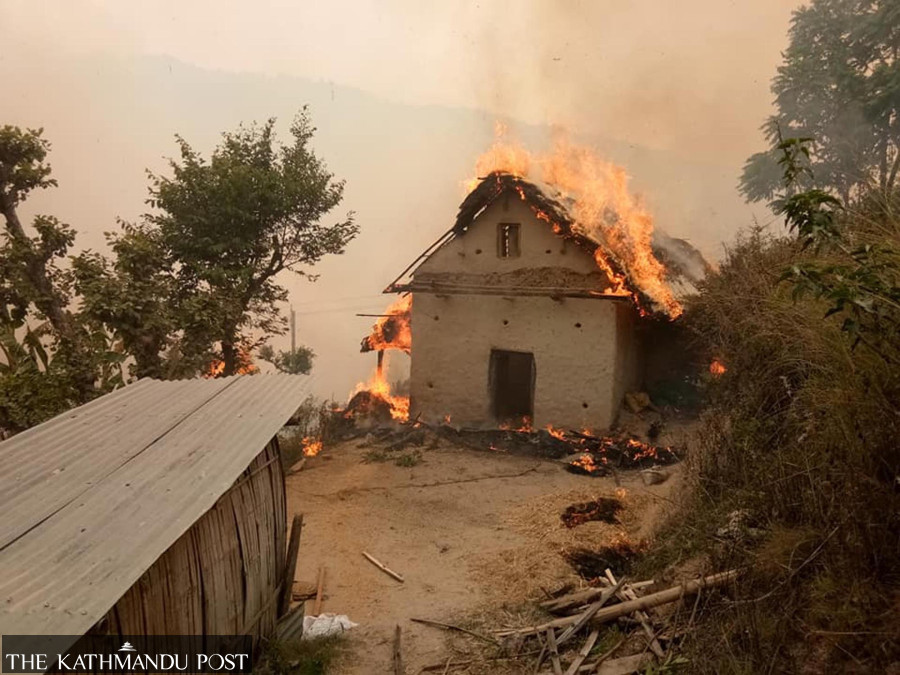Editorial
Season of fires
The priority should be sensitising the public about often-deadly consequences of their negligence.
As the mercury starts to go up, the number of fire incidents is ticking up as well. Many people, mostly children, have already lost their lives and many have incurred huge property losses in such incidents in recent times. The number of such occurrences may rise sharply with the beginning of the spring season, which is considered ‘a season of fires’ in Nepal, at the start of March.
Two children died when an animal shed caught fire in Darba village of Mellekh Rural Municipality in Achham district in the second week of February. On Friday, a 28-member joint family was rendered homeless after an inferno destroyed a two-storey house in Talphigaun settlement of Patarasi Rural Municipality-2, Jumla. Then, on Sunday, fire destroyed four thatched-roof houses at Chamaritol of Jirabhawani Rural Municipality in Parsa district.
As the hot season approaches, the agencies working in the sector need to be well-prepared. It goes without saying that their first priority should be to prevent such disasters. In the event of one, fire fighters, rescuers and other officials concerned should always be ready to act. Unfortunately, the reality is different. In the first place, the units to be deployed to control fire incidents are ill-equipped and lack enough manpower. Second, they are slow to reach the incident sites. In the Achham incident earlier this month, the victims incurred more losses also because of the delay in the rescue and fire-control efforts. Most local authorities in remote districts have no fire trucks. For instance, of the 10 local units in Achham, Mangalsen Municipality is the only local body with a fire truck.
Lack of awareness is one big reason behind fire incidents. Parents are often found not following even basic vigilance and alertness to keep their children away from fire-igniting tools such as matchboxes and lighters. The spark for many such incidents is, unsurprisingly, the seemingly innocent activities of children. Short-circuits and lack of know-how in the use of electrical appliances are additional causes fuelling fires in the newly-electrified villages.
To tackle this situation, the tasks for the authorities are clear enough: launch effective campaigns to prevent disasters, equip the government agencies and local governments and make sure that they spring into action after they get first information. Mainstream as well as social media now cover almost all parts of the country. As people in rural areas have access to modern means of communication, the new technologies can be the fastest and most effective means to disseminate informative messages to create awareness among the people.
Nepali politicians and other stakeholders however have a common malaise. When a disaster occurs in any part of the country, they compete to support the distressed families and communities in the immediate aftermath. But, within weeks, if not days, the plight of the victims is forgotten. Working through institutional mechanisms and a well thought out plan isn’t a preference. At the spring’s outset, all the three tiers of governments– federal, provincial and local governments– should prioritise preventive measures by sensitising the general public about the often-deadly consequences of their negligence.




 11.12°C Kathmandu
11.12°C Kathmandu












%20(1).jpg&w=300&height=200)

